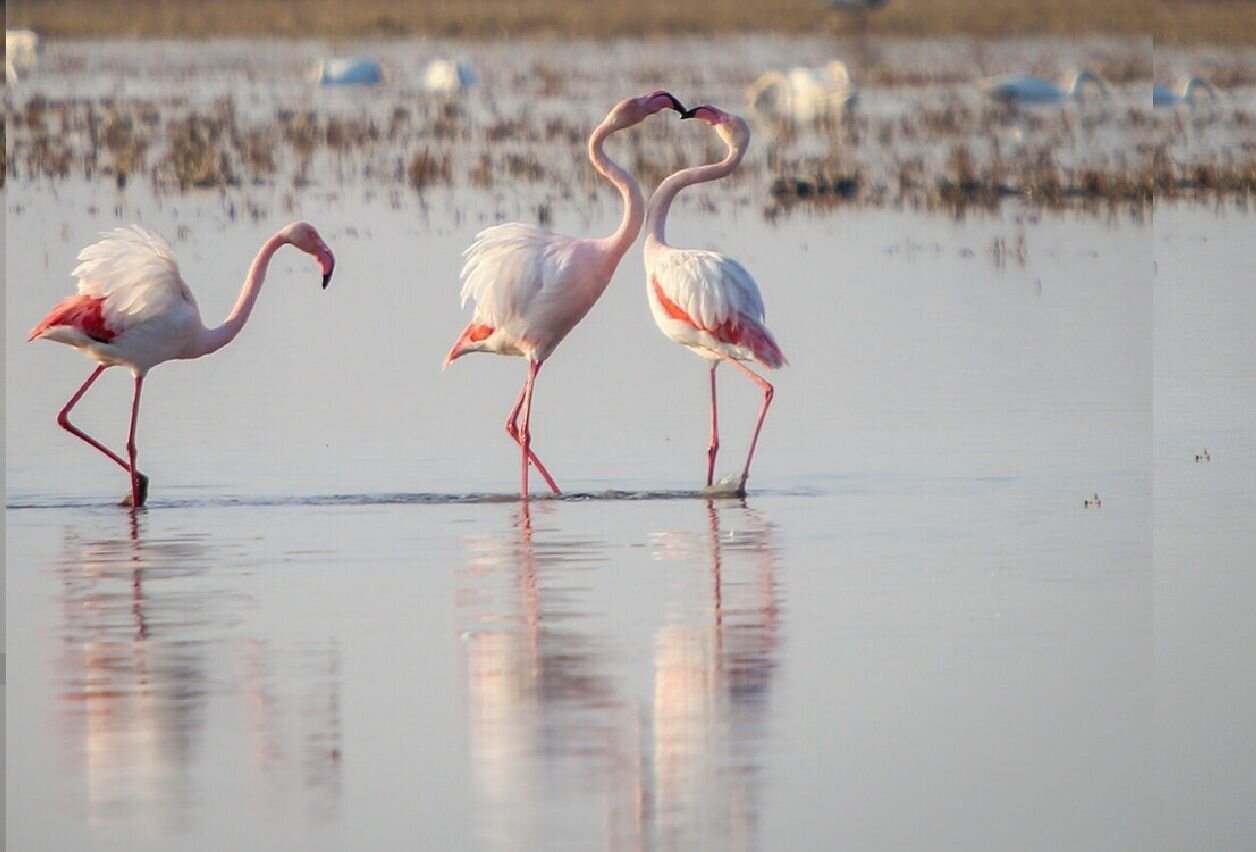Mazandaran hosting wintering migratory birds

TEHRAN – This winter, more migratory birds are migrating to Mazandaran’s habitats thanks to the abundance of rainfall and the suitability of aquatic environments for animal species in the northern province, wildlife experts have said.
Every year from September 6 to November 4, the wetlands of Mazandaran host various species of birds that travel to this destination from colder parts of the Caspian Sea littoral countries hoping to find food and a warm place.
According to Mazandaran’s provincial wildlife department, more than 70 species of native and non-native migratory birds migrate to the wetlands and reservoirs of this province in winter.
Geese, flamingos, and herons are among the migratory birds that come to the wetlands and dykes of Mazandaran to escape the bitter cold of the seasons and spend several months in this part of the north of the country.
In addition to Miankaleh International Wetland, and the two other wetlands, that is Fereydunkenar and Kiasar, Mazandaran has some 915 wetlands and dykes with an area of about 18,000 hectares which is considered the most suitable habitats for migratory birds.
Miankaleh intl. wetland
Miankaleh Wetland is a biosphere reserve, which is known as a wildlife sanctuary and is of high environmental and national importance.
Ashuradeh is the name of an island on the Miankaleh peninsula.
The long and narrow peninsula is 48 kilometers long, and between 1.3 and 3.2 kilometers wide, which sets apart Gorgan Bay from the Caspian Sea. Four villages namely Ashuradeh, Qezel-e Shomali, Qezel-Mehdi, and Qavasatl are situated on the peninsula.
Major habitats include wetlands, inter-tidal mud with sandy shores, shallow marine waters, forests, peatlands, and agricultural areas.
It is home to many unique Caspian birds and reptile species native to this region. It's also a very important internationally-recognized refuge for migratory birds.
Fox, jackals, wild cats, pigs, wild horses, and other animals are among the island’s fauna. Aquatic creatures like salmon and starry sturgeon, as well as native and migratory birds like pheasant, white and black geese, flamingos, and pelicans, also call this environment home.
Raspberry bushes and bitter pomegranate trees are just a couple of the plants that make up Ashuradeh’s vegetation.
The peninsula's water deficits, additionally mismanagement, unsustainable agricultural practices, and severe depletion of the wells and groundwater resources have exacerbated the Miankaleh peninsula’s condition.
Local people earn their income from agriculture, horticulture, animal husbandry, handicrafts, carpet weaving, traditional poultry farming, and tourism.
Overgrazing, illegal hunting, fishing, deforestation, and the unplanned spread of villages are some of the challenges posing a threat to the region’s environment.
Importance of wetlands
Wetlands are ecosystems saturated with water, either seasonally or permanently. They store water and ensure its quality, providing resilience against drought. They play a central role in sustainable development by supplying all our fresh water.
Wetlands play a major role in protecting the land against floods and the impacts of storms. They provide food and diverse habitats that support genetic, species, and ecosystem biodiversity. Wetlands play a key role in the life cycles of many species and in annual migration patterns.
Unfortunately, wetlands are being degraded and lost due to pollution, overexploitation, climate change, and human population growth. In recognition of these challenges, the RAMSAR Convention, an international treaty, was adopted in 1971.
Ramsar Wetlands are sites inscribed on the List of Wetlands of International Importance (the "Ramsar List") under the Convention on Wetlands.
The Convention on Wetlands is an intergovernmental treaty that provides the framework for the conservation and wise use of wetlands and their resources.
In Iran, 141 wetlands with ecological value with an area of over 3 million hectares have been identified, of which 25 wetlands are designated as wetlands of international importance (registered in the Ramsar Convention) covering more than 1.4 million hectares and four sites are biosphere reserves.
Some 43 percent of the country’s wetlands have the potential to become a source of sand and dust storms (SDSs), Sediqeh Modarres, an official with the DOE, stated.
MT/MG
